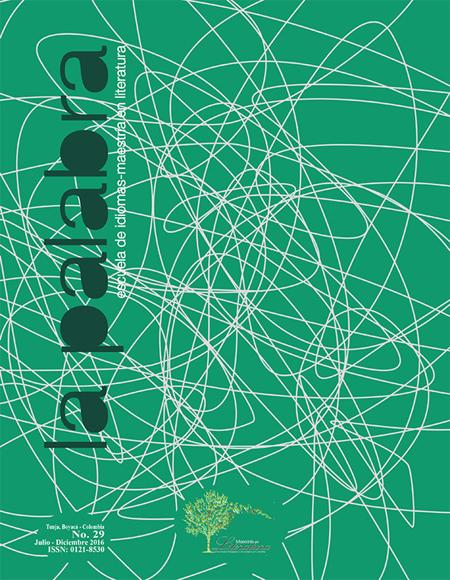On the WordMortgageas Signifier of Bliss with respect to Time inEl perseguidor[The Pursuer]: a Psychoanalytical InterpretationAbstract

Abstract
Literary criticism has pointed out that El perseguidor is about the crisis of an artist, Johnny Carter. Nevertheless, based on psychoanalysis, as a discipline in charge of studying the unconscious, it may be appreciated that this musician is traversed by troubles stemming from the unconscious, from which may be derived specific aspects for understanding the words, attitudes, actions and reactions of this charac ter. The aim of this study is to offer an interpretation that illustrates certain features of this problem and helps to clarify the being of the artist-subject. In order to do this, the present text presents the relation between signifier and body from a psychoanalytical perspective, as elements for an alternative reading of The Pursuer by Julio Cortázar. The purpose is to refer to how a signifier, a word, touches the subject’s body and runs through it and puts him in a state of bliss or jouissance . In the case of “The pursuer”, the word mortgage puts the subject in a state of bliss with respect to time. This implies delving into the matter of bliss [jouissance] and what subject we are referring to, in the case of the musician: a subject in an ongoing crisis due the incidence of the signifierKeywords
unconscious, bliss, signifier, time, artist, Cortázar
References
- Ávila Rodríguez, A. (enero-junio de 2014). De la germinación de lo siniestro: La belleza en espejo roto. La palabra, (24), 99-101. doi: http://dx.doi.org/10.19053/01218530.2505 DOI: https://doi.org/10.19053/01218530.2505
- Cortázar, J. (1993). El perseguidor. Madrid: Alianza Editores S. A.
- Lacan, J. (2011). Seminario 20. Madrid: Paidós.
- Lacan, J. (1987). Seminario 11. Madrid: Paidós.
- Miller, J. (2001). La erótica del tiempo. Buenos Aires: Editorial Tres Haches.
- Monroy Zuluaga, L. (julio-diciembre de 2014). Entre el artista y el crítico: Basura de Héctor Abad Faciolince. La palabra, (25), 57-68. doi: http://dx.doi.org/10.19053/01218530.2870 DOI: https://doi.org/10.19053/01218530.2870
- Pinzón, H.J. (enero-junio de 2014). La literatura como in-corporación: el cuerpo como proceso. La palabra, (24), 91-97. doi:
- http://dx.doi.org/10.19053/01218530.2504 DOI: https://doi.org/10.19053/01218530.2504
- Velásquez, C. (2010). Un rasgo, fundamento de las identificaciones. En H. Gallo (2011). Clínica y teoría de las identificaciones. Bogotá: Nueva escuela lacaniana de Medellín.
- Velásquez, J. (2010). Las identificaciones y el inconsciente Real. En H. Gallo (2011). Clínica y teoría de las identificaciones. Bogotá: Nueva escuela lacaniana de Medellín.
Downloads
Download data is not yet available.